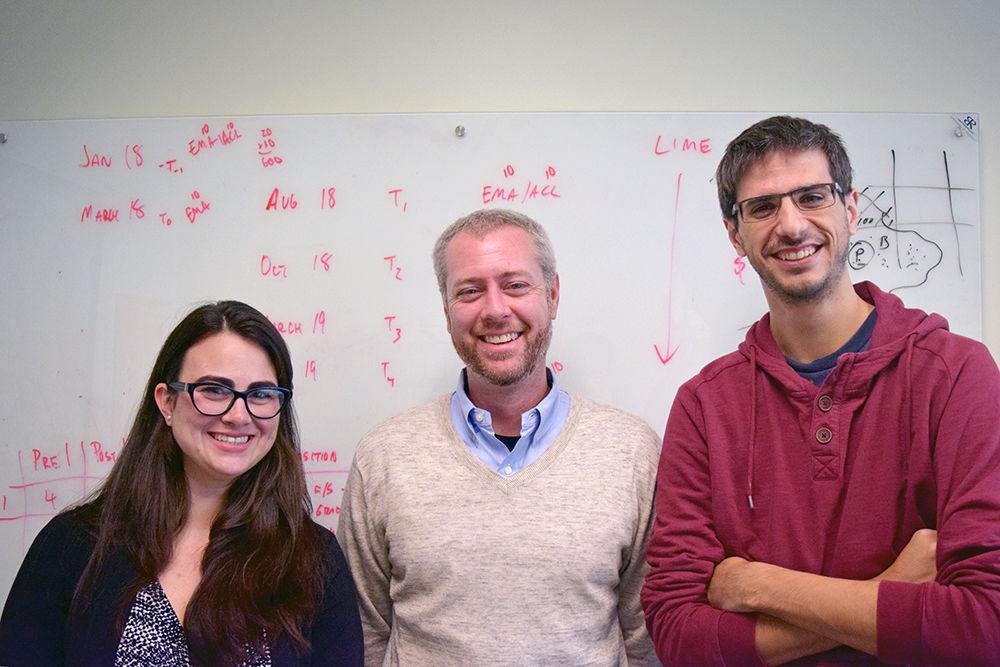On July 6, 2016, millions of people across the world picked up their phones and ventured out to catch the weird Japanese monsters that many on this campus affectionately know as Pokémon. The augmented reality (AR) game sent players to many real world locations to catch and collect digital Pokémon and items. On NC State’s campus, iconic locations like Reynolds Coliseum, Talley Student Union and the former Harrelson Hall site were transformed into “PokeStops” and “Pokemon Gyms.”
Researchers in the Department of Parks, Recreation & Tourism Management recognized the cultural phenomenon and decided to conduct real research on the topic. This research is now out in the form of a scholarly article released last month. Aaron Hipp, one of three NC State writers on the paper, talks about the team’s initial interest in the topic.
“We knew there were a bunch of people playing on campus,” said Hipp, an associate professor of community health and sustainability. “We thought it was a good opportunity and we know and have worked with folks at University Recreation, and we knew they were going to try and tap into it.”
Oriol Marquet, an author on the paper and a postdoctoral researcher in the Department of Parks, Recreation & Tourism Management, said the team spent the first few months after the game’s release preparing survey questions and getting institutional approval for the research. By October, the team was ready to start finding participants just in time for a University Recreation event focused around the game.
“[University Recreation] recruited people who wanted to participate and gathered them into teams and they had to go around campus taking pictures of Pokemon in specific places,” Marquet said. “We took the microphone and explained what we were trying to do and encouraged people to participate.”
The team then began recruiting students through an emailed survey. Hipp said the team was looking for both players and non-players alike for their research. A week later, a follow-up survey went out and the real study began.
“One of the main questions of the survey was ‘what attracted you to Pokemon GO?’ and through that, with a method called principal component analysis, we extracted three factors that could explain the motivation to play,” Marquet said. “Those three factors were those who expressed interest in the Pokemon stuff, those who expressed interest in the physical activity of the game and another group that was more mixed — people who were just curious or who wanted to socialize.”
Hipp and Marquet said these three player-groups expressed different opinions about the game, especially when it came to the game’s physical aspects.
“It was a game of expectations,” Marquet said. “Those who entered the game seeking physical activity were actually less satisfied about their physical activity than the other [groups]. A person that started playing Pokemon GO because they were a Pokemon fan, when asked if they appreciated the physical activity, said yes. What we see is that playing Pokemon GO changes your physical activity a little bit, but not so much. If you are entering with that expectation, it’s easy to see that you feel a little let down. For the other [player-groups], it was a positive thing that they weren’t expecting.”
The disappointment some players found in these aspects of the game is easier to understand when examining the only real activity the game generates.
“Walking is a moderate activity, so that may not represent a meaningful type of physical activity for most young people,” said Claudia Alberico, the third NC State author on the paper and a Parks, Recreation & Tourism Management graduate student. “This could also be the reason why physical activity wasn’t seen as that affected.”
Alberico, Marquet and Hipp plan to release a second paper based on the data collected in 2016 that will go further in depth on the topic of the physical benefits of the game by comparing players and non-players surveyed at the time. Despite differing opinions on the value of the physical features of the game, the team’s research did find one aspect of the game that all three player-groups agreed on.
“The ones who entered the game looking to socialize more rated the social part of the game high, but all of the other groups rated it high as well,” Marquet said. “Throughout the three groups it was positively valued, even if they didn’t start the game just to socialize.”
While the Pokemon GO craze has died down since its initial massive launch over a year ago, Marquet and Hipp both said they believe AR gaming and applications will continue to gain popularity and be worthy candidates of study.
“It doesn’t have to be specifically Pokemon GO, but Pokemon GO embodies the idea that you can get activity through gamification and that you can do it in a large scale and population,” Marquet said. “I think it’s going to stay.”













